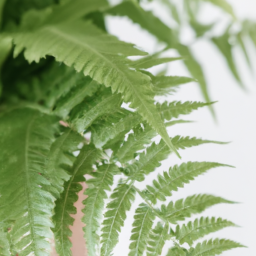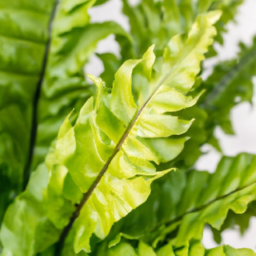
Have you ever considered adding some greenery to your indoor space? If so, you may want to look into the various types of house ferns that are available. House ferns are a popular choice for indoor plants due to their lush foliage and low maintenance requirements. In this blog post, we will explore some of the different types of house ferns that you can incorporate into your home decor. Whether you’re a seasoned plant parent or just starting out, there’s a house fern out there that’s perfect for you. Let’s dive in and discover the beauty and diversity of these versatile plants.
Overview of Different Types of House Ferns
Ferns are a popular choice for indoor plants due to their lush green foliage and air-purifying properties. There are many different types of ferns that can thrive in a house setting, each with its own unique characteristics and care requirements. In this guide, we will explore some of the most common types of house ferns and provide tips on how to care for them.
Boston Fern
One of the most popular types of house ferns is the Boston Fern. Known for its graceful arching fronds and feathery texture, the Boston Fern is a classic choice for indoor plant enthusiasts. This fern thrives in bright, indirect light and high humidity, making it ideal for bathrooms or kitchens. To care for a Boston Fern, be sure to keep the soil consistently moist and mist the leaves regularly to maintain humidity levels.
Another popular type of house fern is the Maidenhair Fern. This delicate fern features delicate, lacy fronds that add a touch of elegance to any indoor space. Maidenhair Ferns prefer bright, indirect light and consistently moist soil. Be sure to water these ferns regularly, as they are sensitive to dry conditions. Additionally, misting the leaves regularly can help to maintain humidity levels and keep the fronds looking lush and healthy.
Bird’s Nest Fern
The Bird’s Nest Fern is another popular choice for indoor plant enthusiasts. This fern gets its name from the way its fronds unfurl from the center of the plant, resembling a bird’s nest. Bird’s Nest Ferns thrive in low to medium light conditions and prefer consistently moist soil. To care for a Bird’s Nest Fern, be sure to water it regularly and avoid letting the soil dry out completely. Additionally, misting the leaves regularly can help to maintain humidity levels and keep the plant looking its best.
In conclusion, there are many different types of house ferns to choose from, each with its own unique characteristics and care requirements. Whether you prefer the classic beauty of a Boston Fern, the delicate elegance of a Maidenhair Fern, or the unique look of a Bird’s Nest Fern, there is a fern out there to suit your indoor plant needs. By following the care tips outlined in this guide, you can enjoy the beauty of house ferns in your home for years to come.

Welcome to the Wonderful World of House Ferns
Popular Varieties of House Ferns for Indoor Gardening
House ferns are a popular choice for indoor gardening due to their lush green foliage and ability to thrive in low light conditions. There are many different types of house ferns to choose from, each with its own unique characteristics and care requirements. In this guide, we will explore some of the most popular varieties of house ferns to help you decide which one is right for your indoor space.
1. Boston Fern
The Boston Fern is one of the most popular types of house ferns, known for its long, graceful fronds and feathery texture. This fern thrives in high humidity and indirect light, making it a great choice for bathrooms or kitchens. To care for a Boston Fern, be sure to keep the soil consistently moist and mist the leaves regularly to maintain humidity levels.
Propagation of Boston Ferns can be done through division or spores, but they can also be easily grown from nursery-bought plants. Regular fertilization during the growing season will help keep your Boston Fern healthy and vibrant.
Common issues with Boston Ferns include brown tips on the fronds, which can be caused by dry air or underwatering. To remedy this, increase humidity levels and water the plant more frequently. Overall, the Boston Fern is a beautiful and low-maintenance house fern that is perfect for adding a touch of green to your indoor space.
2. Maidenhair Fern
The Maidenhair Fern is a delicate and elegant house fern with lacy, fan-shaped fronds that add a touch of whimsy to any room. This fern prefers bright, indirect light and consistently moist soil to thrive. To care for a Maidenhair Fern, be sure to water regularly and mist the leaves to maintain humidity levels.
Propagation of Maidenhair Ferns can be done through division or spores, but they can also be grown from nursery-bought plants. Regular fertilization during the growing season will help keep your Maidenhair Fern healthy and vibrant.
Common issues with Maidenhair Ferns include browning fronds, which can be caused by underwatering or low humidity. To prevent this, water the plant more frequently and increase humidity levels. Overall, the Maidenhair Fern is a stunning and delicate house fern that will add a touch of elegance to your indoor space.
3. Bird’s Nest Fern
The Bird’s Nest Fern is a unique and eye-catching house fern with wavy, crinkled fronds that resemble a bird’s nest. This fern thrives in low to medium light conditions and prefers consistently moist soil to thrive. To care for a Bird’s Nest Fern, be sure to water regularly and avoid letting the soil dry out completely.
Propagation of Bird’s Nest Ferns can be done through division or spores, but they can also be grown from nursery-bought plants. Regular fertilization during the growing season will help keep your Bird’s Nest Fern healthy and vibrant.
Common issues with Bird’s Nest Ferns include yellowing fronds, which can be caused by overwatering or low light levels. To remedy this, water the plant less frequently and move it to a brighter location. Overall, the Bird’s Nest Fern is a striking and unique house fern that will make a statement in your indoor space.

Care and Maintenance Tips for Different Types of House Ferns
Types of House Ferns
When it comes to house ferns, there are several different types to choose from. Some of the most popular varieties include Boston ferns, maidenhair ferns, and bird’s nest ferns. Each type of fern has its own unique characteristics and care requirements, so it’s important to know what you’re dealing with before bringing one home.
Boston ferns are known for their feathery fronds and bright green color. They are relatively easy to care for, requiring regular watering and indirect sunlight. Maidenhair ferns, on the other hand, have delicate, lacy foliage and prefer a more humid environment. Bird’s nest ferns have wavy, nest-like leaves and do well in low light conditions.
Caring for Boston Ferns
Boston ferns are relatively low maintenance plants, but they do require regular watering to thrive. It’s important to keep the soil consistently moist, but not waterlogged. You can achieve this by watering your fern once a week, allowing excess water to drain out of the bottom of the pot.
In addition to regular watering, Boston ferns also benefit from occasional misting to increase humidity levels. You can also fertilize your fern once a month during the growing season to promote healthy growth. Pruning dead or yellowing fronds will help keep your fern looking its best.
To prevent pests and diseases, make sure to inspect your fern regularly for any signs of trouble. If you do notice any issues, treat them promptly to prevent them from spreading to the rest of the plant.
Caring for Maidenhair Ferns
Maidenhair ferns require a bit more attention than Boston ferns, as they prefer a more humid environment. To mimic their natural habitat, mist your fern regularly or place a humidifier nearby. You can also place a tray of water near your fern to increase humidity levels.
When it comes to watering, maidenhair ferns prefer consistently moist soil, but they don’t like to be waterlogged. Water your fern when the top inch of soil feels dry to the touch, and make sure to use room temperature water to avoid shocking the roots.
In terms of light, maidenhair ferns prefer bright, indirect light. Avoid placing them in direct sunlight, as this can scorch their delicate foliage. Rotate your fern regularly to ensure even growth on all sides.
Overall, maidenhair ferns are relatively low maintenance plants, but they do require a bit more attention to humidity levels than other types of ferns.
In conclusion, caring for different types of house ferns requires a combination of regular watering, proper lighting, and occasional fertilizing. By understanding the specific needs of each type of fern, you can create a healthy and thriving environment for these beautiful plants in your home.
Let’s wrap up what we learned
House ferns are a popular choice for indoor plant enthusiasts due to their lush foliage and easy care requirements. There are several different types of house ferns to choose from, each with its own unique characteristics. One common type is the Boston fern, known for its arching fronds and feathery appearance. Boston ferns thrive in bright, indirect light and high humidity, making them a great choice for bathrooms or kitchens.
Another popular house fern is the maidenhair fern, prized for its delicate, lacy fronds and elegant appearance. Maidenhair ferns prefer low light conditions and consistent moisture, making them a great option for shady corners or bathrooms with limited natural light. Other types of house ferns include the bird’s nest fern, rabbit’s foot fern, and staghorn fern, each with its own distinct look and care requirements. No matter which type of house fern you choose, these plants are sure to add a touch of greenery and beauty to your indoor space.
Here are this week’s Top Questions and Answers
Q1. What are the different types of house ferns?
A1. There are several types of house ferns that are popular for indoor decoration, including Boston Ferns, Maidenhair Ferns, Bird’s Nest Ferns, and Staghorn Ferns.
Q2. Which house fern is best for low light conditions?
A2. If you have low light conditions in your home, consider getting a Bird’s Nest Fern or a Maidenhair Fern, as they are more tolerant of low light compared to other fern varieties.
Q3. How often do house ferns need to be watered?
A3. House ferns generally prefer moist soil, so it’s important to keep the soil consistently damp. Water your ferns when the top inch of soil feels dry to the touch, usually about once a week.
Q4. Do house ferns require any special care or maintenance?
A4. House ferns thrive in humid environments, so misting them regularly or placing them near a humidifier can help keep them healthy. Additionally, make sure to trim any dead or yellowing fronds to promote new growth.
Q5. Can house ferns be placed outdoors during the warmer months?
A5. Yes, many house ferns can be placed outdoors during the warmer months, as long as they are not exposed to direct sunlight. Make sure to gradually acclimate them to the outdoor environment to prevent shock.
Dr. Olivia Green is a botanist with over two decades of experience in indoor plant cultivation. She holds a Ph.D. in Plant Biology and has dedicated her career to researching plant behavior in controlled environments. Dr. Green is passionate about helping plant enthusiasts master the art of indoor gardening through her extensive knowledge and practical insights.


